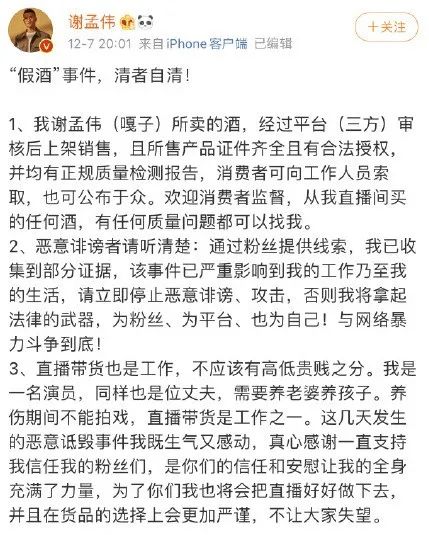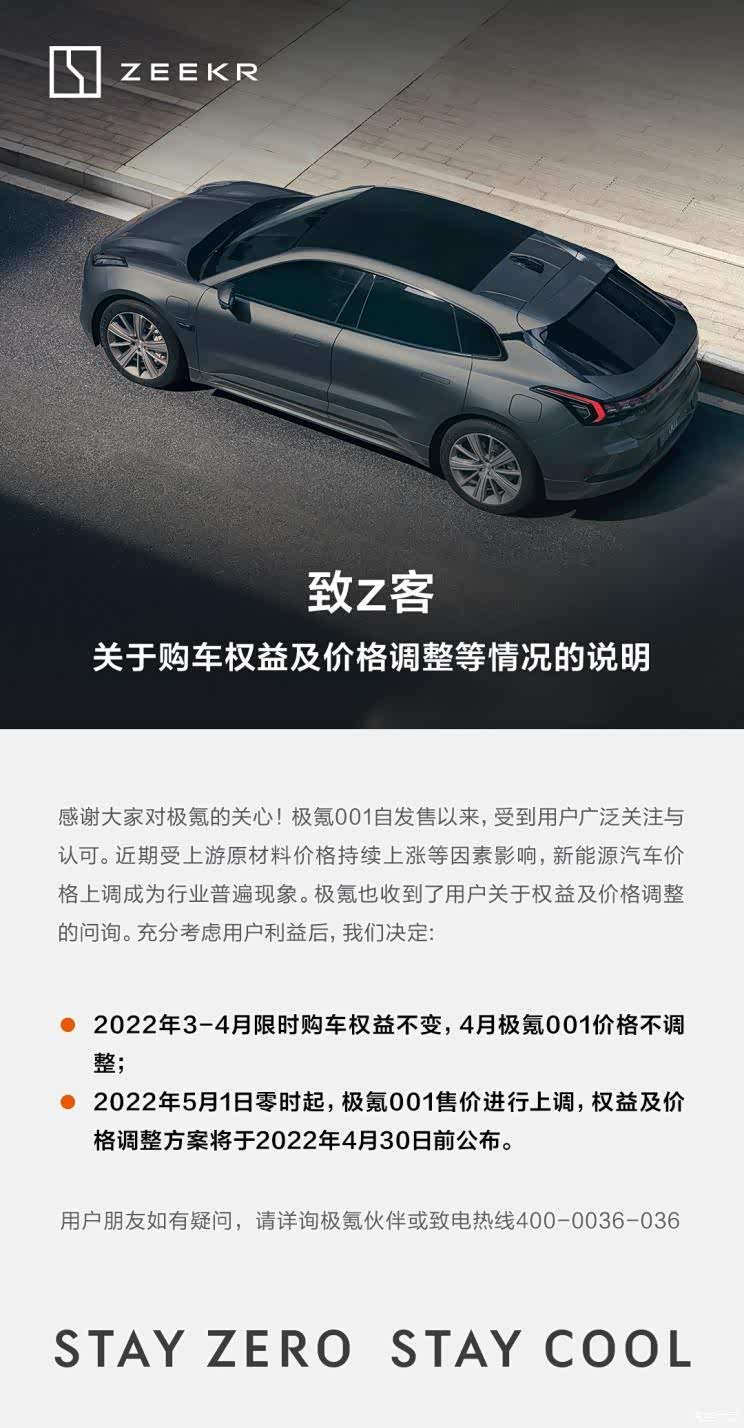Discussion on "Global Carbon Neutralization and China’s Responsibility" The 2021 Zero Carbon Mission International Climate Summit opened in Beijing.




















































On the afternoon of September 28th, the signing ceremony of donation agreement between Guangzhou Zhiyuan Benzhen Food Technology Co., Ltd. and China Agricultural University was held in China Agricultural University. Guangzhou Zhiyuan Benzhen Food Technology Co., Ltd. donated 120 million yuan to China Agricultural University to set up the "Belt and Road" beef cattle industry development fund, which is mainly used for scientific research and industrial services, as well as supporting personnel training, discipline construction and international exchanges. Sun Qixin, president of China Agricultural University, Yao Hualin, founder and Zhang Xingang, chairman of Guangzhou Zhiyuan Benzhen Food Technology Co., Ltd. attended the ceremony, and Xin Xian, vice president of China Agricultural University, attended the event. Han Baofeng, Secretary General of the School Education Foundation, presided over the ceremony.

Under the witness of Sun Qixin and Yao Hualin, Xin Xian, President of the Academy of Kinetic Sciences Wang Junjun and General Manager of Guangzhou Zhiyuan Benzhen Food Technology Co., Ltd. Ye Dingze signed a donation agreement.

On behalf of the school, Sun Qixin expressed his heartfelt thanks to Guangzhou Zhiyuan Benzhen Food Technology Co., Ltd. He said that the General Secretary of the Supreme Leader attached great importance to the construction of an agricultural power and emphasized that "an agricultural power is the foundation of a socialist modernization power". Today’s donation is a practical action to implement the strategic requirements of the CPC Central Committee on "agriculture, countryside and farmers", give full play to the advantages of both sides, promote the deep integration of scientific and technological innovation and industrial innovation, and serve the construction of a strong agricultural country, which is in line with the urgent need to enhance the core competitiveness of the agricultural industry and the innovation trend that science and technology should support industrial development more effectively. At the critical moment when the school is about to celebrate its 120th anniversary, this donation is a great encouragement and strong support for the development of the school. We look forward to making more contributions to accelerating the new journey of building an agricultural power with the joint efforts of both sides in the future.

Zhang Xingang said that science and technology is the core force to promote development. Over the years, China Agricultural University has made remarkable achievements in the field of agricultural scientific research, and many research achievements have been widely and deeply applied, which has injected strong impetus into agricultural development. It is hoped that with the support of China Agricultural University, the company will play the role of chain owner, deeply integrate cutting-edge technology and financial means into the beef cattle industry, and realize efficient operation of the whole chain from production to sales. Under the framework of "One Belt, One Road" initiative, practical problems such as the development potential of beef cattle industry in China and the mutual benefit and win-win of global beef cattle industry resources need far-sighted strategic vision, wisdom guidance and professional guidance from a world-class agricultural university like China Agricultural University and many experts. I sincerely hope to establish a long-term and stable friendly relationship with China Agricultural University and jointly contribute to the construction of a powerful agricultural country.

It is reported that in November 2021, under the guidance of relevant state departments, our school was approved to take the lead in building the "Belt and Road" International Beef Cattle Industry Science and Technology Innovation and Strategy Research Institute, aiming at serving the beef cattle industry in the "Belt and Road" countries to improve quality and efficiency and enhance China’s position in the international agricultural science and technology governance system through multi-level cooperation such as academic exchange, technology transfer and talent flow. The founding team of Guangzhou Zhiyuan Benzhen Food Technology Co., Ltd. has been deeply involved in the beef cattle industry for more than 20 years. The company is committed to serving the development of China’s beef cattle industry and building an industrial chain. Since 2022, Professor Su Huawei’s team has cooperated with this team, and achieved remarkable results in the fields of beef cattle breeding technology optimization and product quality improvement, which strongly supported the high-quality development of enterprises. After communication, the company plans to set up the "Belt and Road" beef cattle industry development fund through donations to support the development of China’s beef cattle industry.

The main person in charge of Guangzhou Zhiyuan Benzhen Food Technology Co., Ltd., the relevant persons in charge of the school’s Party and Government Office, undergraduate college, personnel department, news center, graduate school, scientific research institute, international department, social service department, sports academy and teachers’ representatives attended the event.

It is a touching friendship between two men.

It’s a period of no virtue story.

It reflects the reality and exposes human nature.
It is even very likely that it will be "handed down to future generations."
"the turn of Panga"
This hot word that everyone has been familiar with recently.
Where did it come from?
This has to start with the story of these two men. ……
Everyone knows the two protagonists of "The Turn of Panga"
"Pan" refers to the sketch actor Pan Changjiang.
"Ga" refers to Xie Mengwei, who plays Zhang Ga, a soldier.
Needless to say, Pan Changjiang has attended 20 Spring Festival Galas.
There should not be many people in the country who don’t know him.

"Gazi" was also a real fire in those days.
By the way, it is our male god of middle-aged and elderly people after 90.
Not too much.

But Gazi’s star career
Since Private Zhang Ga, it has basically come to a screeching halt.
I acted in some plays, but none of them were famous.
I guess I didn’t make much money.
(Da Bu Liu: refers to the English abbreviation transliteration of money and ten thousand)

The witty Gazi found himself a new way out.
"live broadcast with goods"

Relying on the popularity of childhood
Gazi’s live broadcast is also popular.
Intimate, he also returned to the "family" in the live broadcast room.
Took a famous name "Ga Jia Jun"

Nothing, just take the mighty Ga family army.
Come out for a walk and find someone to pk

With the growth of "Gajia Army"
Brother Gazi may also be a little "gone with the wind"

"People floating in rivers and lakes will inevitably get stabbed."
Finally, something happened.
Gazi was caught selling fake wine by Gajia Army.

At first, Gazi was still stubborn.

But it was still hammered.

Gazi made a live broadcast to apologize to Gajiajun.
Countless Gajia troops and people who eat melons came to denounce them.

Gazi, a muscular man, was scolded until he cried.
I can’t hold on to it.

At this moment, the man
Him! Come on! Yes!

As a senior with rich life experience.
Pan Shu quickly gave Gazi a lecture.
A series of ideological and moral education
Sentence! Sentence! Classics! Canon!

Pan Shu also focused on his
"live money view"
He told Gazi not to broadcast live to save face.
Not to mention not to sneak a live broadcast in order to earn money.

When it comes to not caring about face
Pan Shu slapped his face as he spoke.

These slaps fanned Pan Shu’s face, and also fanned Gazi’s heart.
After listening to Pan Shu’s teachings, Gazi was deeply moved.
He remembered running in Baiyangdian sunset when he was a child.
I remembered my initial heart.

I believe that Gazi is not the only one who has realized this at the moment.
The audience who ate melons at the scene also realized it.
Everyone, including me, must believe it
There is an old-timer with such integrity as Teacher Pan.
The smoky live broadcast industry
Will definitely open the clouds and see the light.

But! Yes!
I never expected it.
A few days later, netizens saw it.
Such a sad scene

Pan Shu, who advised Ga to turn around
Open your own live broadcast, engage in e-commerce and sell wine!
Proficiency in business, fluency in speech
startling

Pan Shu, who regards "reaching for success" as dirt.
I also began to care about the payment progress of the entrepreneurs.
Although the virtual on the network may not be easy to grasp
But there are still unpaid ones that must be paid quickly.

This wave of operation down.
Repentant Gazi, moved passers-by all stupid.

Although I am also very puzzled.
But with respect for old artists,
I studied the reason from a scientific point of view.
Finally, it turns out that it’s really not weird Pan Shu.
The deepest natural water depth of the Yangtze River is in Niuguanji.
The depth of 103 meters is higher than 30 stories.

The deepest depth of Baiyangdian Lake in Gazi is unknown.
But the average water depth is only 2.3 meters

This is reasonable, although the water in the webcast is very deep.
But not as deep as the Yangtze River!
Gazi in Baiyangdian can’t grasp it.
But he Pan Changjiang.

This wave, this wave is
"Learn from Ga’s long skills to control Ga"
Who would have thought that Pan Shu wouldn’t play skits?
Studying the art of war

However, it seems that he Pan Shu
I’m not sure very well either.
Family members shopping at Pan Shu’s house.
Also feedback some quality problems.

"Tu Ga will eventually become Ga".

The family is so sad now.
His name was changed from "Pan Shu" to "Pan Zi"
In the live broadcast room of "Uncle Ga"
All let him to persuade "Pan Zi".

In the live room of "Pan Zi"
They also made him listen to Uncle Ga.

In this regard, "Uncle" said
"I really can’t persuade Pan Zi, I can only mind my own business."

Things have come to an end here
"The Turn of Panga" was born.

Became almost comparable to
The existence of "Jing ze Yan Xiang"

But I think.
This matter cannot and should not be.
Just smile and smile in the past.
Star live broadcast to make money, no shame.
Shame, it’s a lie!

Appendix: (Homework after class)
(1) Recite the full text of "The Turn of Panga"
(2) read the full text, think about Pan Shu’s attitude change before and after what enlightenment to you? What caused him to change so much?
3 Forward likes to watch Sanlian
Doctor, for a minute, the posture keeps rising.
-End of this period-
Welcome to share your circle of friends ~

I’m Dr. Curious
Nice to meet you.
Original title: "What is the" Pan-Ga Turn "that has been popular all over the network recently? 》
Read the original text
[car home New Energy] Recently, we learned from relevant channels that the price of (|) (hereinafter referred to as Extreme Krypton 001) double-motor YOU version will increase by 18,000-20,000 yuan from May 1, 2022, and the price will increase from the current 368,000 yuan to about 388,000 yuan. According to the official information released before, other models of Krypton 001 may also increase their prices, but the increase is undecided.

At the beginning of April 2022, Krypton said that from 0: 00 on May 1, 2022, the price of Krypton 001 will be raised, and the rights and price adjustment plan will be announced before April 30, 2022; The price of the car will not be adjusted in April 2022. The official said that the reason for this price increase is the sharp rise in the price of upstream raw materials, the tension in the global automobile supply chain, the decline in subsidies, cost and supply chain pressure.

At present, Krypton 001 has three models on sale, namely, the WE version with long battery life single motor, the WE version with long battery life double motor and the YOU version with long battery life. The current prices are 286,400 yuan (subsidized price), 286,400 yuan (subsidized price) and 368,000 yuan respectively. According to the information we have learned, the price of YOU version will increase to about 388,000 yuan, and the price increase of the other two models is undecided. (Text/car home You Dongqing)








[North-South economy, both good]
In recent years, voices such as "the south is crushing the north in an all-round way" and "the south is strong and the north is weak" often appear on the Internet. How to correctly treat the economic gap between North and South in China? What are the comparative advantages and development opportunities of the North under the new development pattern? With these questions, the reporter from Economic Daily-China Economic Net interviewed Lu Baile, secretary and chairman of Dagong International Party Committee.
Lu Baile believes that "North-South economic gap" can better reflect the pattern and present situation of China’s North-South economic development than the popular saying on the Internet. Regarding the economic comparison between the north and the south of China, Lu Baile said that it should be viewed objectively from a historical perspective and a development perspective. The economic difference between the north and the south more reflects the complementary advantages of the north and the south in China’s industrial layout. China has a vast territory, and each region has its own characteristics. In recent years, the spatial structure of China’s economic development is changing, and the characteristics of multi-point flowering and cooperation are becoming more and more obvious. With the accelerated construction of China’s new development pattern, the industrial layout in different regions is expected to be further optimized, and the advantages of coordinated economic development between North and South will be further reflected in the future.
Economic Daily-China Economic Net reporter: Recently, the topic of North-South economic gap has been heated up again. What do you think?
Lu Baile:Objectively speaking, these arguments and voices only see the appearance of things, and it is biased to draw these conclusions from the comparison of individual data. China has a vast territory. Influenced by land, climate, population and other factors since ancient times, there are certain differences in economic development between the north and the south. In addition, the implementation of national industrial layout and opening-up strategies in different historical periods since the founding of New China are the main factors that lead to the differences in economic composition and marketization between the north and the south. Therefore, from the point of view of history and development, compared with the popular saying "North-South economic gap" on the Internet, "North-South economic gap" can better reflect the pattern and present situation of China’s North-South economic development.
From the perspective of historical factors, the historical legacy of industrial development layout in different periods of the planned economy era has a certain impact on the differences in industrial structure between north and south regions. At the beginning of the founding of New China, China was faced with a severe economic situation. The domestic productivity was not only very backward, but also the layout was extremely unbalanced. More than half of the heavy industries were concentrated in the Northeast. Since then, due to the consideration of the international and domestic situation and geopolitical factors, the focus of a large number of new projects has been in the inland central and western regions; Since then, it has experienced the strategic layout of expanding the main industries to the inland depth, such as the third-line construction. These national industrial strategic layouts in different periods have distinct characteristics of the times, which have made important contributions to the development of national economy in a specific period, but objectively they have also branded the industrial structure in different regions with the times. Since then, with the promotion of China’s reform and opening-up policy, industrial upgrading and market-oriented reform, the historical accumulation of industry has also caused differences in economic development nodes in different regions. In this process, the temporary imbalance of economic development in different regions is inevitable. Therefore, in dealing with the economic comparison between the north and the south of China, we should look at it objectively from a historical perspective and a developmental perspective.
Since the reform and opening up, there have been some differences in the development direction of different industries in the north and south regions of China, but this difference more reflects the complementary advantages of the north and south regions in China’s industrial layout. China’s southern region began to implement the reform and opening-up policy earlier than the northern region. Thanks to the development of international division of labor and export-oriented economy, and the inherent geographical advantages in shipping, the southern region participated in the international market competition earlier, with a high degree of marketization and a high proportion of non-public economy.
On the other hand, although the development of export-oriented economy in the northern region is relatively backward, the supporting role of the northern economy in China’s basic industries, energy, agriculture and other fields ensures the smooth implementation of the opening-up strategy in the southern region and the overall security and balance of the national economy. At the same time, with its advantages in scientific research, education and other fields, the north has imported indispensable human resources for the development of the southern economy. In this sense, this economic difference between the north and the south more reflects the complementary advantages of the north and the south in China’s industrial layout.
In addition, we believe that it is too simplistic and general to distinguish China only from North and South or East and West. China has a vast territory, and each region has its own characteristics. In recent years, the spatial structure of China’s economic development is changing, with the regional layout of the western development, the revitalization of Northeast China, the rise of central China, the modernization of eastern China, and the layout of economic belts and urban agglomerations such as promoting the coordinated development of Beijing-Tianjin-Hebei, the development of the Yangtze River Economic Belt, the construction of Guangdong-Hong Kong-Macao Greater Bay Area and the integrated development of the Yangtze River Delta, and the characteristics of multi-point flowering and cooperation are becoming more and more obvious. It is predicted that in the future, central cities, urban agglomerations and economic belts will be the main spatial carriers to promote the flow of factors between regions and form a regional economic layout with complementary advantages and high-quality development.
Economic Daily-China Economic Net reporter: Is there really a huge gap between the North and the South? How to treat this gap rationally?
Lu Baile:Judging from the economic aggregate and economic growth rate, there is indeed a certain gap between some provinces in the north and south at this stage, but we believe that the term "economic difference between the north and the south" can better reflect the pattern and current situation of economic development in the north and south of China. To some extent, it is this complementary difference that supports the rapid development of China’s economy, so we should treat this difference dialectically from a historical perspective and a developmental perspective.
The difference between the north and the south of China is mainly reflected in the industrial structure, in which the south is dominated by light industry and foreign trade, while the north is dominated by agriculture and heavy industry, and this difference is mainly determined by the endowment conditions and the needs of different stages of China’s economic development. From the north, its natural resources are abundant, Shanxi, Hebei, Inner Mongolia and other provinces have abundant coal resources, Shaanxi-Gansu-Ningxia and Northeast China have abundant oil and natural gas reserves, and North China and Northeast China have vast land, especially in the Northeast Plain. Therefore, at the beginning of the founding of New China, a large number of resource-intensive industries, heavy chemical industries with high dependence on natural resources and agriculture were mainly located in the north, thus forming an industrial structure dominated by agriculture and heavy chemical industries in the north. From the south, its natural resources are relatively scarce, and due to historical inertia, light industry with human labor as the mainstay has been in a dominant position in the southern economy for a long time. After the reform and opening-up, the comparative advantages of shipping facilities in the southeast coastal areas have been brought into full play, and with the support of national policies, the export-oriented economy in the southern region has developed rapidly, and two economic zones, the Yangtze River Delta and the Pearl River Delta, have been formed.
With the weakening of investment, the value chain of heavy chemical industry, which is highly dependent on investment in the northern economy, has been hit to some extent and needs to promote industrial transformation; However, the negative impact of the slowdown in investment on the southern economy is relatively small, and the dividend brought by the export-oriented economic development model has been obtained. Therefore, the differentiated industrial structure between the North and the South makes its economic performance different at different stages of economic development, and it is this differentiated industrial structure that makes China maintain a rapid economic growth rate under different economic development modes.
At present, China is speeding up the construction of a new development pattern with the domestic big cycle as the main body and the domestic and international double cycles promoting each other. It is expected that under the new development pattern, the differences in industrial structure between the North and the South will bring their respective comparative advantages. The two sides will jointly promote the high-quality development of China’s economy in the process of supplementing shortcomings, forging long boards, complementing advantages and industrial synergy.
Economic Daily-China Economic Net reporter: Under the new development pattern, what are the comparative advantages, latecomer advantages and development opportunities of the North?
Lu Baile:In recent years, great changes have taken place in the economic situation at home and abroad, and the central government has sized up the situation and proposed to speed up the construction of a new development pattern with the domestic big cycle as the main body and the domestic and international double cycles promoting each other. From the connotation of the new development pattern, it includes the transformation of the market and the transformation of the industrial chain, etc. The former means that the supply and demand of the market begin to tilt from the international market to the domestic market, while the latter means that the upgrading of the industrial chain relying on independent innovation will dominate the future development direction of China’s industry. At these two levels, relying on the broad market space and solid comparative advantages of scientific research and education, the northern region of China is bound to usher in a new period of development opportunities under the new development pattern.
From the perspective of market transformation, since the reform and opening up, China’s economic pattern, especially in the southern region, has long been biased towards the export-oriented economic model. Under the new development pattern, the focus of the market will gradually shift to the domestic market. In this transformation process, the development of market potential in the northern region is the key to the success of the transformation. Judging from some economic indicators other than GDP, the consumption potential of residents in the northern region is gradually catching up with that in the southern region. According to the data released by the National Bureau of Statistics, the top ten provinces with per capita disposable income in 2020 are Shanghai, Beijing, Zhejiang, Tianjin, Jiangsu, Guangdong, Fujian, Shandong, Liaoning and Inner Mongolia. With the domestic economic growth relying more and more on the cultivation of the domestic consumer market, the contribution of economic growth in the northern region will be more prominent in stimulating the national economic growth in the future. Under the new development pattern, the late-developing advantages of the northern region will be gradually reflected in regional coordinated and balanced development, coordinated development of urban and rural areas and rural market development.
From the perspective of industrial chain transformation, the trade conflict between China and the United States in the past two years has highlighted the weakness of China’s industries, especially advanced manufacturing industries, which relied heavily on the international market in the past period. How to break through this bottleneck is the key for China’s economy to take off in the next step, and relevant strategies have been highlighted in the new development pattern. Large scientific research institutes and many state-owned enterprise headquarters and R&D centers have gathered in the northern region, which are the source power for China to upgrade its industrial chain through scientific and technological innovation in the next step. Especially with the state-owned enterprises entering a new round of reform, enterprises will develop by leaps and bounds in terms of operating efficiency, innovation ability and competitiveness in the future, helping the northern region to catch up with the economy.
In addition, under the new development pattern, the northern region has also ushered in a new round of development opportunities in agriculture and other fields. Agriculture has always been the dominant industry in northern China. Under the new development pattern with the domestic macro-cycle as the main body, the role of agriculture in ensuring its position in the national economy has been further enhanced. Rural market development is an important component of China’s domestic circular market cultivation, and it is also a key area of development. It is expected that the development of agricultural economy in the future will help China’s northern economy to a new level.
To sum up, under the new development pattern, the complementary economic advantages and industrial synergy between the north and the south of China are expected to further deepen.
Economic Daily-China Economic Net reporter: What suggestions do you have for the coordinated development of China’s North-South economy?
Lu Baile:In promoting regional coordinated development, first, the top-level design should be strengthened at the macro level to meet the needs of promoting high-quality economic development under the new development pattern; Second, all regions should make up short boards and forge long boards according to their own conditions, give play to their comparative advantages, and implement the overall planning. In fact, in recent years, China has introduced many policies and measures to promote coordinated regional development from different levels.
In the Central Committee of the Communist Party of China’s Proposal on Formulating the Fourteenth Five-year Plan for National Economic and Social Development and the Long-term Goals in 2035, "the gap between urban and rural regional development and the gap between residents’ living standards has been significantly reduced" has become one of the long-term goals in 2035. From the specific measures: first, in terms of production factors, promote the market-oriented allocation reform of land, labor, capital, technology and data elements, improve the efficiency of resource allocation, and give play to the decisive role of the market in resource allocation; Second, in terms of system, promote the reform of state-owned enterprises and give play to the strategic supporting role of state-owned economy; Third, at the specific regional policy level, promote regional development strategies such as the development of the western region, the comprehensive revitalization of the northeast, the rise of the central region, and the coordinated development of Beijing-Tianjin-Hebei.
In the future, we need to do a good job in the implementation of the policies that have been introduced and improve the policy landing effect. First, combine the advantages of land, resources, technology and labor in the north with the capital and scientific and technological innovation ability in the south to realize the complementarity between the north and the south; Second, there are many state-owned enterprises in the north. Through the implementation of the Three-year Action Plan for State-owned Enterprise Reform (2020-2022), the state-owned enterprises will truly become stronger and better, enhance the vitality of state-owned enterprises, improve efficiency, and realize the strategic supporting role of the state-owned economy; Third, effectively solve the pain points in regional policies, reverse misunderstandings, and guide the flow of funds, talents and technology.
We believe that with the accelerated construction of China’s new development pattern, the regional industrial layout is expected to be further optimized, and the advantages of China’s coordinated economic development between North and South will be further reflected in the future.
Economic Daily-China Economic Net reporter: There are a large number of state-owned enterprises in the north, especially in the northeast. Under the new situation, can the North gain new development momentum by deepening the reform of state-owned enterprises?
Lu Baile:On June 30, 2020, the 14th meeting of the Central Committee for Deep Reform deliberated and adopted the Three-year Action Plan for State-owned Enterprise Reform (2020-2022), which is a programmatic document for deepening the reform of state-owned enterprises in China in the new development stage. With the in-depth implementation of the three-year reform of state-owned enterprises, the advantages that the North can obtain mainly include the following aspects.
First of all, compared with the south, the state-owned enterprises in northern China account for a relatively large proportion, and the reform of state-owned enterprises under the new situation is expected to make the northern region play a late-comer advantage and revitalize the state-owned economy through scientific and technological innovation. Secondly, the state-owned enterprises in the northern region are more intensive and the natural resources are more abundant. Through appropriate mergers and reorganizations, especially for regional resource-intensive state-owned enterprises, it is expected to further give play to the comparative advantages of resource agglomeration of state-owned enterprises in the northern region and make them stronger, better and bigger. Thirdly, cross-regional integration of state-owned enterprises is also conducive to enhancing economic cooperation and coordinated development between the North and the South. (Economic Daily-China Economic Net reporter Ma Changyan)
At present, with the deep adjustment and weak recovery of the world economy, the downward pressure on China’s economy has increased. Since March, 2016, CCTV has set up the column of "Steady Growth, Restructuring, Transformation and Series of Research Lines", which reflects the new changes, new vitality and new kinetic energy of local economic development with concrete and vivid examples by excavating the new highlights and innovative practices of local economic development, and provides experience enlightenment with important sample significance for the next development of China’s economy.


On the "100th anniversary of Mao Zedong’s birth", a music tape titled "Red Sun – A New Rhythm of Mao Zedong’s Ode" triggered an unprecedented climax in the history of Chinese pop music. To this day, "Red Sun" still holds the title of the top seller in the history of Chinese audio-visual publishing with an astonishing record of 7.20 million.

These songs were born in the burning years of passion, and they are engraved in the hearts of a generation. They have accompanied us through the difficult revolutionary road, inspired us to work hard to build a new China, and now they sing the red songs of the past. Can they once again stir your burning heart and bring you some inspiration, aftertaste and touching?
Do you still remember these songs?
CD1
01, the sun is the reddest, Chairperson Mao is the most dear
02. The sun is bright red in the sky
03. The red sun shines on the frontier
04. Chairperson Mao’s words are remembered in our hearts
05. The brilliance of Chairperson Mao
06. The people of Awa sing a new song
07, 10 to send the Red Army
08. Nanniwan
09. On the Golden Mountain in Beijing
10. Osmanthus blooms happily
11. Wish Chairperson Mao a long and boundless life
12. The song in my heart is dedicated to the People’s Liberation Army
13. Highland barley wine dedicated to Chairperson Mao
14. Read Chairperson Mao’s book
15. Chairperson Mao’s writings are like the sun
16. Happiness doesn’t come from heaven
17. Our leader Mao Zedong
18. The sun is red on Jinggang Mountain
19. Chairperson Mao came to our farm
20. Laundry Song
21. Sing happily all over the slope
22. Chairperson Mao will always be with us
23. Harvest Song
24, Yanbian people love Chairperson Mao
25. I love the blue sky of my motherland
26. We Communists are like seeds
27. Liuyang River
28. Long live Chairperson Mao
29. Chairperson Mao is a member of our society
30. Revolutionaries are always young
CD2
01. The Communist Party is here. Bitter and sweet
02. Turn over the serfs and sing
03. Chairperson Mao is the red sun in the hearts of people of all ethnic groups
04. The sun that never sets on the grassland
05, Yaxi
06, August osmanthus blooms everywhere
07. Chairperson Mao’s words are remembered
08. Soldiers sing the East is Red
09. Deep friendship
10. Ode to Chairperson Mao
11. Ode to the motherland
12. Miss Chairperson Mao day and night
13. Remember the kindness of Chairperson Mao from generation to generation
14. I love Beijing Tiananmen Square
15. Chinese sons and daughters aspire in all directions
16. Red Army soldiers miss Chairperson Mao
17. Butterfly Love Flower · Answer Li Shuyi
18. Suffering people make revolution with guns
19. Ode to the Red Lantern
20. All hands pour happiness flowers
21. I love this blue ocean
22. Chairperson Mao’s soldiers listen to the party the most
23. The water of Wanquan River is clear and clear
24. Missing Chairperson Mao
25. Looking at Beijing with deep affection
26. Hongmeizan
27. Chairperson Mao sent someone
28. Big red dates for relatives
29. Chairperson Mao is with us
30. Beijing has a golden sun
CD3
01. The people of Sani aspire to the red sun
02. Salute to Beijing
03. Supplement military uniforms for our relatives
04. Chairperson Mao’s greatest works
05. The pastoralists listen to Chairperson Mao the most
06. The frontier races Jiangnan everywhere
07. Harvest Song
08. The heroes defeated the Dadu River
09. Mountain Township is looking forward to your coming
10. Collection of herbs
11. Pastoral
12. The old landlord checked the shop
13. Gaogao Prince Mountain
14. Water comes to mountains one by one
15. Jindal, Hero Flower
16. Shandandan blooms red and bright
17. Large-scale military and civilian production
18. Chairperson Mao’s badge hangs on my chest
19. Aiming at the innovation industry of Baodao
20. Plant pumpkins in Jinggangshan
21. The great Beijing
22. The world is yours
23. Chairperson Mao of Grassland People’s Singing
24. I offer oil for my country
25. Chairperson Mao of Zhuang People’s Singing
26. Come in February
27. We love Chairperson Mao the most
28. Pull a camel
29. Days in the Liberated Areas
30. Railway soldiers aim at the four directions
CD4
01. Sing a folk song to the party
02. Autumn Harvest Riot Song
03, Herdsmen Singing Chairperson Mao
04. This is where the Red Army walked
05. Bless Chairperson Mao for a long life
06. Chairperson Mao’s works are shining
07. Tea Song
08. The Song of Harvest
09. Saliha listens to Chairperson Mao the most
10. Flowering on the cliff
11. The red star shines on me to fight
12. The poor middle peasants love Chairperson Mao
13. Send the Plague God
14. The People’s Navy is advancing
15. The people on the grassland met Chairperson Mao
16. Send a pair of straw sandals to the Red Army
17. Bear the burden of tea in Beijing
18. Embroidered gold plaque
19. The sun is Mao Zedong
20. What a joy
21. Looking forward to the Red Army
22. The waves of Honghu Lake
23. Singing Erlang Mountain
24. The happiest to see Chairperson Mao
25. Soldiers love to read Chairperson Mao’s books
26. The lights of the octagonal building
27. The people’s army is loyal to the party
28. Who doesn’t say my hometown is good?
29, Zhuang brocade to Chairperson Mao
30. Chairperson Mao returns to his hometown
CD5
01. Women’s militia at sea
02, singing Chairperson Mao, singing the Communist Party
03. Miaoling even Beijing
04. Praise
05. Comrades in the People’s Liberation Army, please stop
06. Carol to Shaoshan
07. The Morning Song of the Grass
08. Prairie Hymn
09. The fisherman girl is by the sea
10. I have Wuzhishan, and I love Wanquan River
11. Chairperson Mao of Kirgiz People’s Singing
12. People say Shanxi is beautiful
13. Run forward along the socialist road
14. May your loved ones recover from their injuries as soon as possible
15. Pastoral
16. The Zunyi meeting shines brightly
17. Socialism shines
18. Xin Tianyou sang to Chairperson Mao
19. Chairperson Mao traveled all over the motherland
20. Chairperson Mao, we will always be loyal to you
21. Dedicated to the great Chairperson Mao
22. There is a beautiful place
23. Ussuri Boat Song
24, Yan’an children heart to Chairman Mao
25. The Kazakh people will always follow Chairperson Mao
26. Chairperson Mao’s kindness cannot be sung
27. Play the tambourine and sing
28. I stand guard for the great motherland
29. Shaoshan has a red sun
30. Heroic hymns
The original title: "Red Song Album" Red Sun "swept the country, how many songs do you remember now?"

CCTV News:17 years ago, when the SARS epidemic broke out, Guo Huimin, head nurse of Beijing You ‘an Hospital, entered the front line. Seventeen years later, when the COVID-19 epidemic broke out, Guo Huimin once again asked for a war. The reason for asking for a war was simple: "Let me go, I have experience!"
In the rear, we must be the strong backing of nurses.
On the first day of New Year’s Day in 2020, Guo Huimin received a notice from the nursing department of the hospital to set up an isolation ward in COVID-19 to treat patients. As a "veteran" with 28 years’ experience in nursing infectious diseases, she immediately rushed to the hospital for the first time. However, this time she was not sent to the front line.
As the head nurse of internal medicine, Guo Huimin has rich management experience and is familiar with the situation of nurses. Therefore, the hospital first arranged for her to assist in the deployment of nursing staff.
She assisted the nursing department, determined the echelon of reserve personnel according to the professional ability, characteristics and family situation of nursing staff, and arranged the head nurse, backbone nurses, nurses at different levels and specialist nurses to enter the ward in batches, so as to ensure that the staff were reserved, arranged in a planned way, the department informed early and the nurses prepared early, thus ensuring the orderly development of nursing work in COVID-19 ward.
In view of the fact that nurses in COVID-19 ward have many regular shifts, the staff is not fixed, and they can’t concentrate on training and learning, she recorded videos such as specimen transfer and walking route in COVID-19 ward, and sent them to nurses to facilitate everyone’s study.
Guo Huimin knows that the rear is also a "battlefield". As a head nurse, she must be the strong backing of nurses so that they have no worries.
On the front line, nurses are also "spiritual comforters"
With the development of the epidemic, Guo Huimin entered the isolation ward and served as the head nurse of the infection center. Every day, she goes to the ward at 7 o’clock in the morning and is busy until late at night. At the end of the day, in addition to doing a good job in nursing, Guo Huimin should be a "spiritual comforter" for patients with the nurses in the ward constantly improving and refining the nursing workflow.
Different from other hospitalized patients, the family members of COVID-19 patients are not allowed to visit, let alone accompany them, and the ward medical staff are the only objects they can get along with day and night. Without the company of relatives, many patients seem to be on an island, causing fear and loneliness.
In order to relieve their psychological pressure, Guo Huimin goes to bed every day to chat with them to understand their psychological state and life needs.
During a rounds, a mother and daughter caught Guo Huimin’s attention. That is a young mother whose daughter is just one year old. Both infected women are anxious, especially their mothers, who feel a great physical and psychological burden. And children see so many uncles and aunts dressed in "weird", and they are also afraid. Guo Huimin is also a mother, and her child’s frightened eyes make her worry. In order to make children smile again, Guo Huimin immediately mobilized general nurses to buy toys and daily necessities for children. Not only that, Guo Huimin will hug the children first and play with them for a while before each rounds.

Guo Huimin and the baby in the ward
Unconsciously, the child always makes a "giggle" laugh, which also reduces the anxiety of the child’s mother.
"Although the patient can’t see us through the thick protective clothing, touching the patient’s arm, patting the patient’s shoulder and saying a word of encouragement will make the patient feel kind and enhance their confidence in overcoming the disease." Guo Huimin said.
When entering the isolation ward, the protection work should not be sloppy.
As a head nurse, superb professional ability is necessary for her duties, and protecting the safety of everyone who goes in and out of the ward is a matter of constant concern to her.
Having been fighting for a long time in the front line of infectious disease prevention and control, Guo Huimin knows that in the isolation ward, the work should not be sloppy, and a little carelessness may cause serious consequences. Therefore, first of all, she is strict with herself and is not allowed to slack off, which also makes the nursing team in the department take her as a benchmark.
As the "big housekeeper" of nurses, Guo Huimin wears protective clothing every day to check the reserve of protective items in the ward and pay attention to the work and psychological situation of nurses. Even if the goggles are dripping and the back is soaked with sweat, she will still strictly ask the medical staff to do a good job of protection according to the specifications.
It is her wish that every warrior who fights the epidemic can come back safely.

Guo Huimin is guiding nurses in the ward.
Nowadays, many patients have been cured and discharged from hospital. Many patients will say to Guo Huimin and the medical staff when they leave: "Thank you for your careful care these days. It is really not easy for you."
But for Guo Huimin, there is nothing "not easy", which is just his own responsibility.
From the fight against SARS to the fight against the COVID-19 epidemic, the phrase "Let me go, I have experience" is behind Guo Huimin’s belief and responsibility in the face of epidemic prevention and control, and it is also the mission and initial heart of a medical worker to save lives. (Text/Chen Xin)
Welcome to Autohome Zhuhai Promotions Channel. Today, we bring you an exciting promotion information: the high-profile luxury SUV is being promoted with unprecedented price reduction. At present, consumers in Zhuhai are fortunate to enjoy the highest discount of up to 174,900 yuan, making this luxury model with a starting price of 472,000 yuan now have the opportunity to buy at a more attractive price. Want to seize this rare promotion opportunity? Don’t hesitate to click "Check the car price" in the quotation form. Let’s explore deeper discounts together and make your car purchase dream more accessible.

The exterior design of the Volvo XC90 is refined and powerful, with the front face featuring the family’s iconic "Quake" LED headlights, and the chrome-decorated straight waterfall air intake grille, showing a high degree of recognition. The overall style is atmospheric and stable, and the streamlined body lines reflect the style of a luxury SUV, giving a sense of dignity and elegance. The proportions of the side of the body are coordinated to provide a spacious and comfortable visual experience for drivers and passengers.

On the side design, the Volvo XC90 shows the perfect combination of elegant streamline and power. The body size reaches 4953mm*1958mm*1778mm in length, width and height, and the wheelbase reaches 2984mm, providing a spacious interior space. The tire specification is 275/45 R20, which not only guarantees the driving performance, but also makes the vehicle more visually dynamic, and the matching wheel design highlights its high-end luxury temperament.

The Volvo XC90 interior is exquisitely designed and practical, with luxurious leather materials to create a high-end atmosphere. The steering wheel is wrapped in leather, providing a good grip, and supports manual up, down, and front and rear adjustments, making it easy for the driver to adjust the position according to needs. The center console is equipped with a 9-inch touch screen, with multimedia system, navigation, phone and air conditioning functions, and supports automatic speech recognition for easy driver operation. The seats are rich in configuration, with front and rear adjustment, backrest adjustment, height adjustment and waist support in the main and passenger seats. The front seats are also equipped with heating function, and the driver’s seat also has power seat memory function. In addition, the front and rear rows of the vehicle are equipped with USB and Type-C ports, providing passengers with convenient charging and multimedia interfaces.

The Volvo XC90 is powered by a 2.0T turbocharged engine with a maximum power of 184 kilowatts and a maximum torque output of 350 Nm, providing 250 horsepower performance. The matching is an 8-speed automatic transmission, which ensures smooth power transmission and driving experience.
Overall, the Volvo XC90 has won over Autohome owners with its unique exterior design, and the exquisite craftsmanship of the lights and wheels has made him praise it, which undoubtedly adds more charm to this luxury SUV. For consumers who pursue individuality and practicality, the XC90 is undoubtedly an excellent choice worth considering.